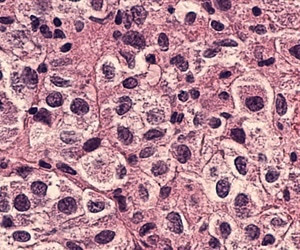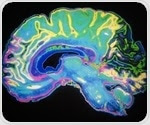| |
 A study presented today at the annual meeting of the Radiological Society of North America (RSNA) suggests that neurofeedback training has the potential to lessen the severity of tinnitus or even eliminate it. A study presented today at the annual meeting of the Radiological Society of North America (RSNA) suggests that neurofeedback training has the potential to lessen the severity of tinnitus or even eliminate it. | |
|
| |
 Tiny remotely operated robots could be designed to diagnose and treat illness in hard-to-reach areas of the human body, research suggests. Tiny remotely operated robots could be designed to diagnose and treat illness in hard-to-reach areas of the human body, research suggests. | |
|
| |
 The minispec TD-NMR analyzers allow for rapid process-control, quality-control and R&D. The minispec TD-NMR analyzers allow for rapid process-control, quality-control and R&D. | |
|
| |
 Hydrogenation is a process used for refining vegetable oils and hydrocarbons. Hydrogen consumption presents a significant cost issue in a refinery, whereas percentage hydrogen content serves as a key indicator of refining progress. Hydrogenation is a process used for refining vegetable oils and hydrocarbons. Hydrogen consumption presents a significant cost issue in a refinery, whereas percentage hydrogen content serves as a key indicator of refining progress. | |
|
| |
 Claustrophobia is a fear of enclosed spaces or physical restriction. It is often present with anxiety disorders. Claustrophobia affects approximately 4 percent of the population. Claustrophobia is a fear of enclosed spaces or physical restriction. It is often present with anxiety disorders. Claustrophobia affects approximately 4 percent of the population. | |
|
| |
 A team of neuroscientists at the University of Pennsylvania has constructed the first whole-brain map of electrical connectivity in the brain based on data from nearly 300 neurosurgical patients with electrodes implanted directly on the brain. A team of neuroscientists at the University of Pennsylvania has constructed the first whole-brain map of electrical connectivity in the brain based on data from nearly 300 neurosurgical patients with electrodes implanted directly on the brain. | |
|
| |
 A new study, published in eLife, shows that most people born prematurely, who also suffered small brain injuries during the time of birth, have lower levels of dopamine in the brain. A new study, published in eLife, shows that most people born prematurely, who also suffered small brain injuries during the time of birth, have lower levels of dopamine in the brain. | |
|
| |
 New King's College London research, published today (28 November) in eLife, shows that adults born prematurely - who also suffered small brain injuries around the time of birth - have lower levels of dopamine in the brain. New King's College London research, published today (28 November) in eLife, shows that adults born prematurely - who also suffered small brain injuries around the time of birth - have lower levels of dopamine in the brain. | |
|
| |
 Extramammary Paget disease or EPMD is a rare disease characterized by the appearance of a chronic skin rash, resembling eczema, in the genital areas. Extramammary Paget disease or EPMD is a rare disease characterized by the appearance of a chronic skin rash, resembling eczema, in the genital areas. | |








No hay comentarios:
Publicar un comentario